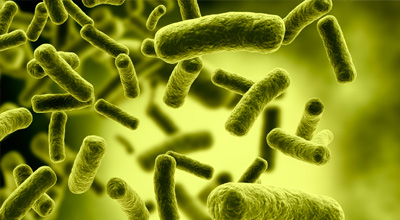Micro Imaging Technology Adds Staph Bacteria to it's Catalog of Identifiers

San Clemente, CA. December 31, 2013....Micro Imaging Technology, Inc. (OTCQB: MMTC) announced that its MIT 1000 System can now identify the potentially life-threatening bacteria Staphylococcus. Staph is one of the five most common causes of infections after injury or surgery and can lead to very serious complications with the lung (pneumonia), brain (meningitis), bone (osteopmyelitis), heart (endorcarditis), and blood (bacteremia and septicemia). It is also an important food pathogen. “This is a tremendous step forward for both our technology and our Company,” stated Jeff Nunez, MIT’s President and CEO. “We have not only added another Identifier to our catalog, but this opens the door for the MIT 1000 Technology to enter the clinical pathogen detection and identification arena. The Identifier is available now and will soon undergo AOAC certification,” he continued. Staph can also be contracted through food contamination, as recently reminded by the USDA’s announcement involving the recall of dried sausage products in San Jose, California1. The MIT 1000 is a rapid, bacterial cell-based detection and identification system that can identify pathogenic bacteria, now including Staph, in three minutes (average) at half the cost of the industry average for pathogen tests.
In October 2013, the Company announced that it is collaborating with the Northern Michigan University (NMU) Department of Biology to identify and differentiate Staphylococcus aureus (S. aureus) and the “superbug,” Methicillin Resistant S. aureus (MRSA). The goal of this strategic research with NMU is to rapidly and cost-effectively identify these two particular healthcare threats using the MIT 1000 System. Staph infections can range from mild skin problems to potentially fatal conditions if the bacteria invade deeper into the body. Most can be easily treated, however, some Staphs are drug-resistant. The faster the responsible disease causing bacteria is identified, the faster the appropriate treatment can begin. This is the driving goal behind the NMU/MIT collaboration using the MIT 1000 to differentiate between the common S. aureus and MRSA. At this stage, the collaboration involves scientists from MIT and NMU gathering preliminary data and developing collaborative research proposals seeking funding in support of continued research.
Dr. Josh S. Sharp, assistant professor at NMU’s Department of Biology, is directing the NMU research on clinical applications of the MIT 1000. “Being able to quickly identify if a patient has an S. aureus infection, and whether or not that S. aureus is MRSA, a strain of S. aureus resistant to certain antibiotics, would be extremely useful in dictating the proper course of treatment for that patient, and ultimately, increase the likelihood of a successful patient outcome,” Sharp said.
Micro Imaging Technology’s Chief Scientist, Dr. David Haavig, was instrumental in developing the MIT 1000 and is the program director of the effort and will lead MIT’s team in the collaboration. “This Staph Identifier is a key addition,” he said. “This Staphylococcus Identifier will simplify and speed the creation of our upcoming S. aureus, Staphylococcus epidermidis (S. epidermidis) and MRSA Identifiers.” The Staphylococcus Identifier and candidate S. aureus and S. epidermidis Identifiers and an MIT 1000 System will be delivered to Professor Sharp within the next few weeks, then he with his graduate and undergraduate students and we at MIT will begin the preliminary stage of our MRSA collaboration. Meanwhile, MIT is working on a series of Salmonella Identifiers including the common food pathogens S. Enteritidis and S. Typhimurium.